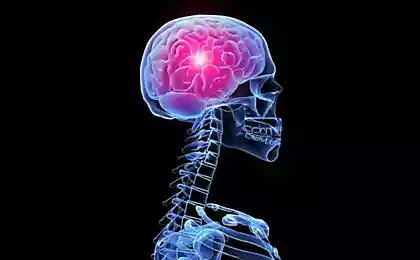971
Facts about the eyes (25 photos)
Eyes - an amazing tool in our body. Not only do they allow us to see, but they have a lot of other entertaining features and functions. 25 of which we have listed in this article:
Eye color can vary

The iris does not imply the presence of green and blue pigments, and, depending on the lighting, can acquire different shades. All blue-eyed people - distant relatives
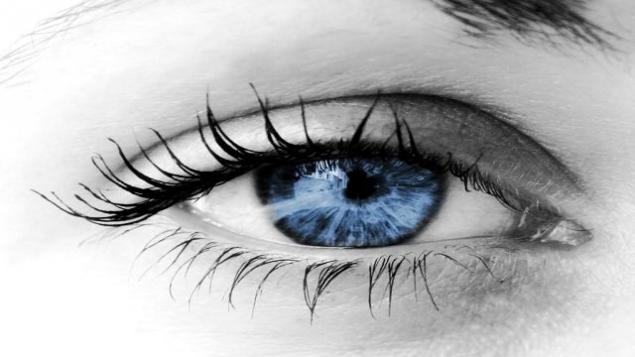
The first man with blue eyes was born on 6-10 thousand years ago. In those days, they were all brown-eyed.
The retina is made up of 107 million light-sensitive cells

Thus, only 7 million responsible for color recognition. The remaining one hundred and help to distinguish black and white. Thus, the color takes less than a tenth of the receptor.
Normal vision - 20/20 (1, 0)
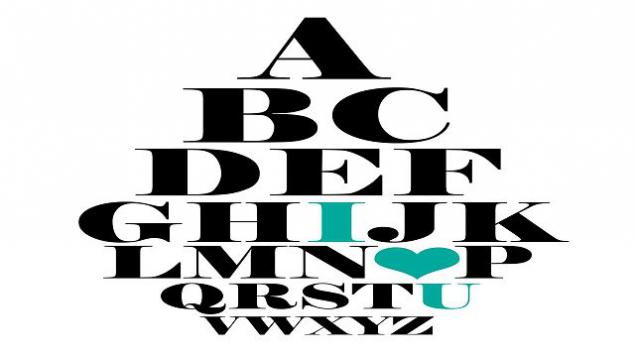
Quite the approximate number, but, according to doctors, with a good light, a person is able to distinguish objects at a distance of 20 feet.
If you wear glasses, which would have turned the image upside down, your brain would not have noticed the difference

The experiments confirm that even if you see the picture upside down, your brain adapts over time, taking an inverted image of the normal.
You blink 17 times per minute, 14, 280 times a day and 5, two million times per year

A fun fact: you blink more when you say, what you read.
Eye muscles - the fastest in the whole body

The man blinks at an amazing rate. To blink, you will need 100 to 150 milliseconds. In one second you will have time to blink five times.
With age, you need reading glasses

99% of people aged 43 to 50 need glasses for near vision - over time, the lens loses its focusing ability.
Eyes faster than any camera

Before the pupil is the lens of the eye responsible for focusing our vision with you. Look around and try to "eyeball" to determine the distance to objects around you: the lens of your eye will constantly change focus, and you do not even notice. The Chamber is required a few seconds to focus the image.
Blink - an extremely important function

Blinking, we remove dust and other unwanted debris from the surface of the eye, as well as moisturizes and lubricates it. Tears also have antibacterial properties.
Cataracts - a natural result of aging
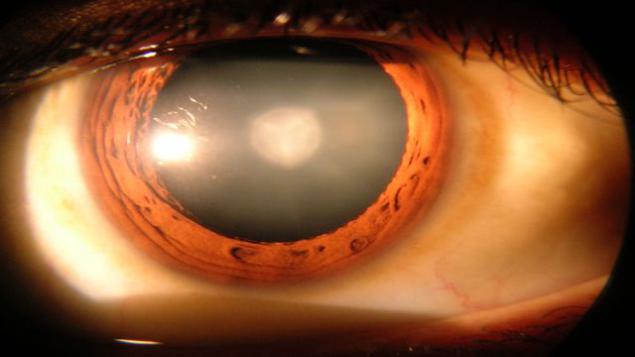
Old age presupposes not only the gray hair, and cataracts. The initial stages of cataract can be detected at the age of 75-85 years.
Diabetes can be detected during eye examinations
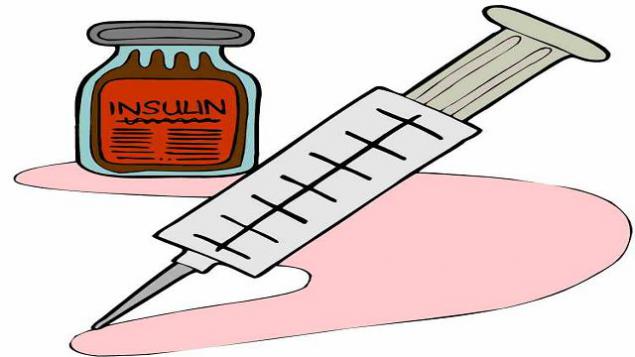
Type II diabetes is very tricky, and special shows no symptoms, but an experienced ophthalmologist will notice slight bleeding from the back of the eye, which usually indicate the presence of a patient second stage of diabetes.
You see the brain, not the eyes
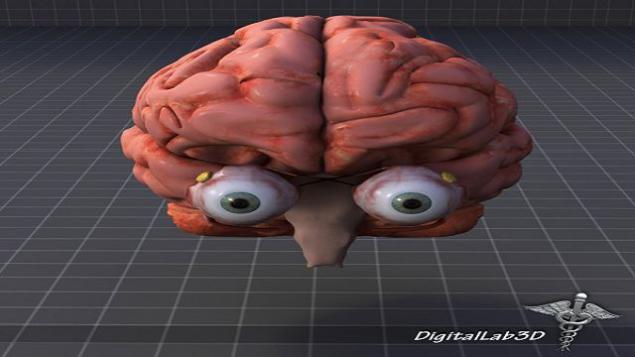
It may sound obvious, but if you have eye problems, it does not mean that something is wrong with your eyes. It is possible that part of the brain that is responsible for visualization, has undergone some unwanted changes - it happens, and caused complications can be of different nature.
The eyes can adapt to the blind spot

Some diseases, such as glaucoma can lead to blind spots, but our brains found a way to cope with them: it allows other, healthy eye to take responsibility for blind spot, while suppressing the activity of the latter. Thus, we cease to notice a blind spot, if it does not exist at all.
20/20 (1, 0) - not the best sight
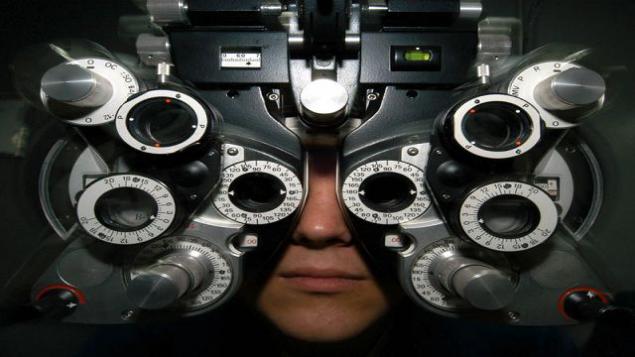
20/16 - much sharper than, for example, and allow you to see the bottom line in the test for visual acuity that is inaccessible to a person with 20/20 vision. However, the sharpest eye has characteristics 20/8 - a figure means that, whether you are my eyes, you would be able to see objects at a distance of 20 feet (6 meters) as clearly as you see them at a distance of 8 feet (2 5 meters).
If the eyes are dry, they start many tears
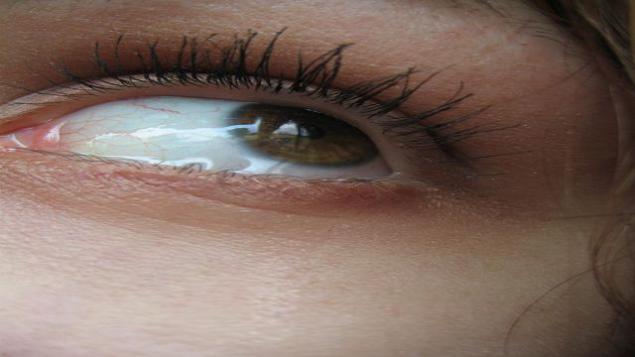
Tears generally consist of three components: water, fat and mucus. If they are mixed in unequal proportions, the eye may become dry, even if there is full of liquid. Whatever it was, the brain does not understand it and begin to produce more tears!
The eyes heal quickly

With proper care, 48 hours from scratch on the eye will be over.
Infants do not really cry

They will surely cry, but their eyes are not able to allocate the tears starting to water only after an interval of 4 to 13 weeks after birth.
Doctors have not yet managed to transplant the eye

The optic nerve, which provides the connection eye to the brain, is too sensitive to it you can recreate in the laboratory.
Size and weight

The diameter of the eye an average of 2, 54 centimeters and weighs about 7 grams.
Heterochromia

Quite a remarkable phenomenon in which the color of the iris left and right eyes differs markedly.
Eye muscles
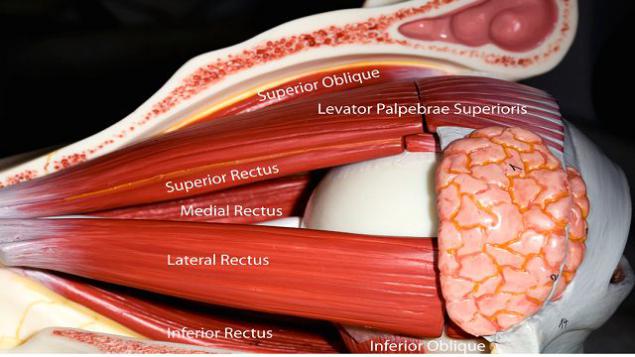
Among all the muscles of the body, the eye muscles are most active.
The complexity of the design

The eyes are made up of more than two million components necessary for their full functioning.
Shark eyes

Cornea shark is very similar to a human, and it even allows surgeons to use it as a substitute for the latter.
Most eye diseases - incurable
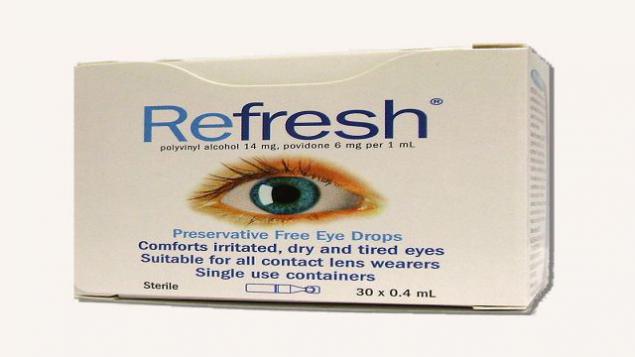
80% of problems with vision, can be prevented, and sometimes even cure. Modern laser surgery in combination with proper diet and taking concomitant medication are proof of that.
Eye color can vary

The iris does not imply the presence of green and blue pigments, and, depending on the lighting, can acquire different shades. All blue-eyed people - distant relatives

The first man with blue eyes was born on 6-10 thousand years ago. In those days, they were all brown-eyed.
The retina is made up of 107 million light-sensitive cells

Thus, only 7 million responsible for color recognition. The remaining one hundred and help to distinguish black and white. Thus, the color takes less than a tenth of the receptor.
Normal vision - 20/20 (1, 0)

Quite the approximate number, but, according to doctors, with a good light, a person is able to distinguish objects at a distance of 20 feet.
If you wear glasses, which would have turned the image upside down, your brain would not have noticed the difference

The experiments confirm that even if you see the picture upside down, your brain adapts over time, taking an inverted image of the normal.
You blink 17 times per minute, 14, 280 times a day and 5, two million times per year

A fun fact: you blink more when you say, what you read.
Eye muscles - the fastest in the whole body

The man blinks at an amazing rate. To blink, you will need 100 to 150 milliseconds. In one second you will have time to blink five times.
With age, you need reading glasses

99% of people aged 43 to 50 need glasses for near vision - over time, the lens loses its focusing ability.
Eyes faster than any camera

Before the pupil is the lens of the eye responsible for focusing our vision with you. Look around and try to "eyeball" to determine the distance to objects around you: the lens of your eye will constantly change focus, and you do not even notice. The Chamber is required a few seconds to focus the image.
Blink - an extremely important function

Blinking, we remove dust and other unwanted debris from the surface of the eye, as well as moisturizes and lubricates it. Tears also have antibacterial properties.
Cataracts - a natural result of aging

Old age presupposes not only the gray hair, and cataracts. The initial stages of cataract can be detected at the age of 75-85 years.
Diabetes can be detected during eye examinations

Type II diabetes is very tricky, and special shows no symptoms, but an experienced ophthalmologist will notice slight bleeding from the back of the eye, which usually indicate the presence of a patient second stage of diabetes.
You see the brain, not the eyes

It may sound obvious, but if you have eye problems, it does not mean that something is wrong with your eyes. It is possible that part of the brain that is responsible for visualization, has undergone some unwanted changes - it happens, and caused complications can be of different nature.
The eyes can adapt to the blind spot

Some diseases, such as glaucoma can lead to blind spots, but our brains found a way to cope with them: it allows other, healthy eye to take responsibility for blind spot, while suppressing the activity of the latter. Thus, we cease to notice a blind spot, if it does not exist at all.
20/20 (1, 0) - not the best sight

20/16 - much sharper than, for example, and allow you to see the bottom line in the test for visual acuity that is inaccessible to a person with 20/20 vision. However, the sharpest eye has characteristics 20/8 - a figure means that, whether you are my eyes, you would be able to see objects at a distance of 20 feet (6 meters) as clearly as you see them at a distance of 8 feet (2 5 meters).
If the eyes are dry, they start many tears

Tears generally consist of three components: water, fat and mucus. If they are mixed in unequal proportions, the eye may become dry, even if there is full of liquid. Whatever it was, the brain does not understand it and begin to produce more tears!
The eyes heal quickly

With proper care, 48 hours from scratch on the eye will be over.
Infants do not really cry

They will surely cry, but their eyes are not able to allocate the tears starting to water only after an interval of 4 to 13 weeks after birth.
Doctors have not yet managed to transplant the eye

The optic nerve, which provides the connection eye to the brain, is too sensitive to it you can recreate in the laboratory.
Size and weight

The diameter of the eye an average of 2, 54 centimeters and weighs about 7 grams.
Heterochromia

Quite a remarkable phenomenon in which the color of the iris left and right eyes differs markedly.
Eye muscles

Among all the muscles of the body, the eye muscles are most active.
The complexity of the design

The eyes are made up of more than two million components necessary for their full functioning.
Shark eyes

Cornea shark is very similar to a human, and it even allows surgeons to use it as a substitute for the latter.
Most eye diseases - incurable

80% of problems with vision, can be prevented, and sometimes even cure. Modern laser surgery in combination with proper diet and taking concomitant medication are proof of that.






